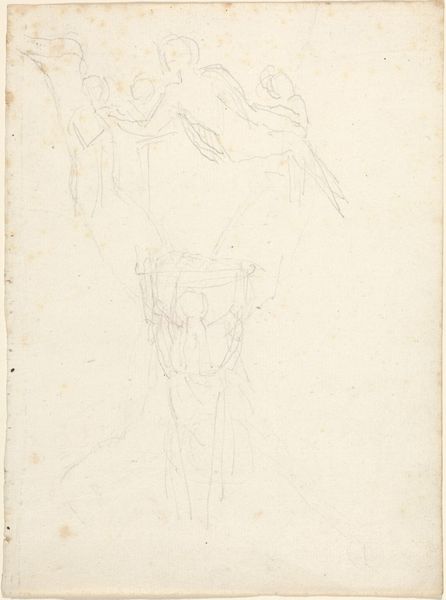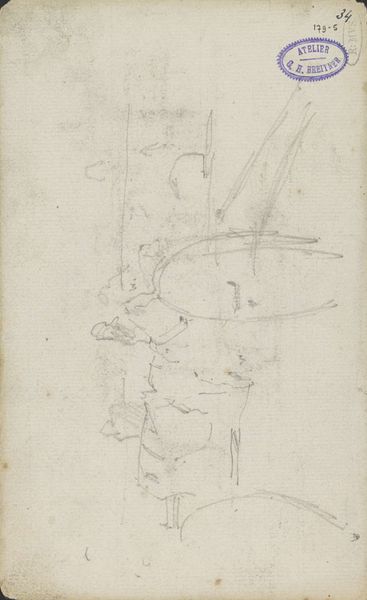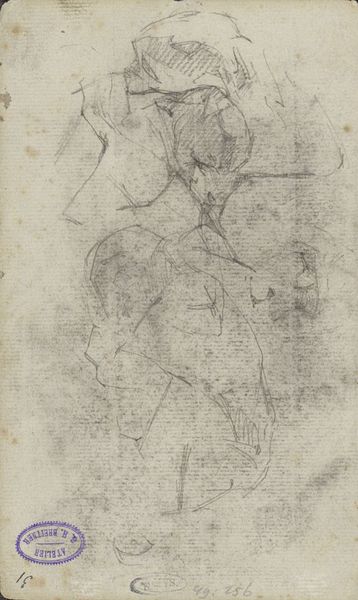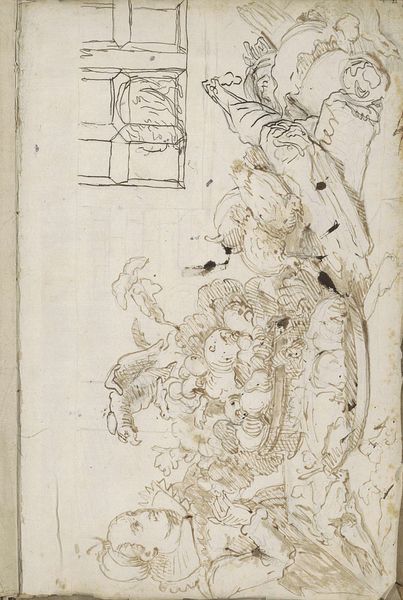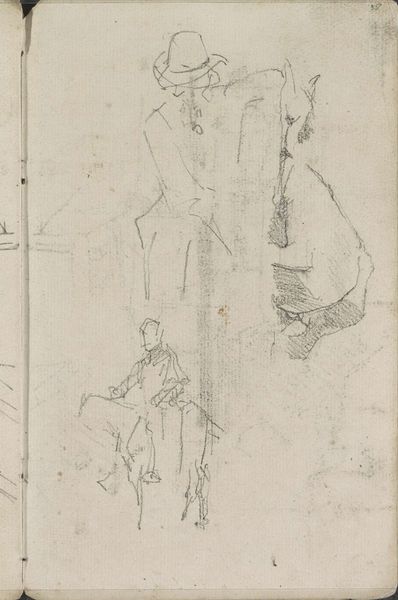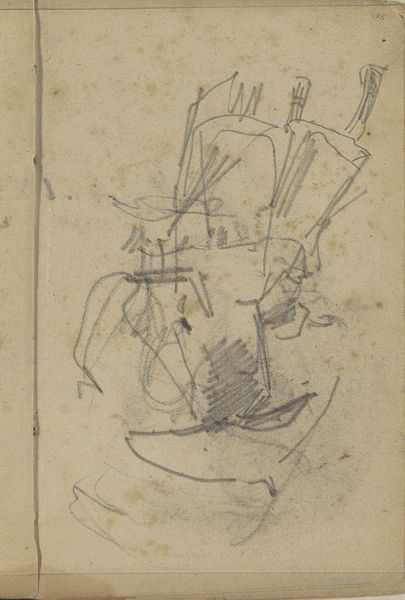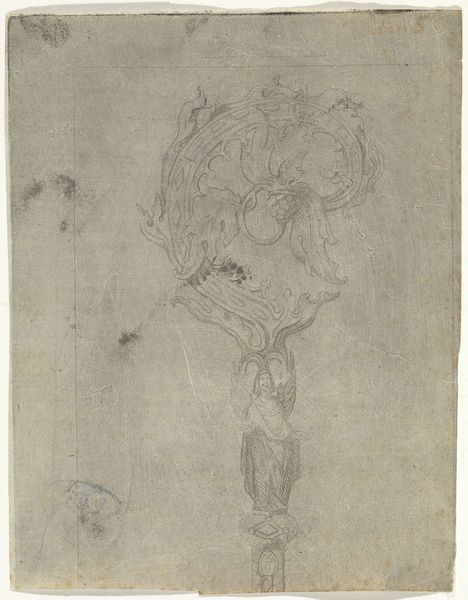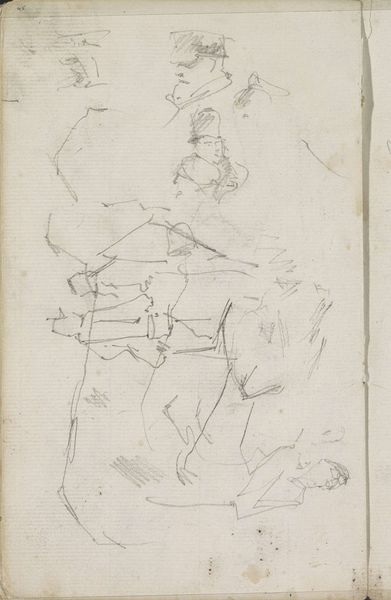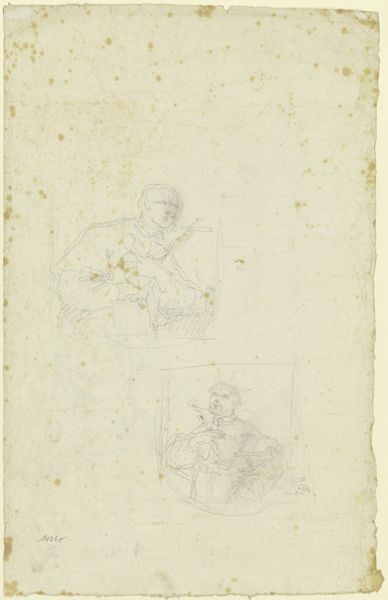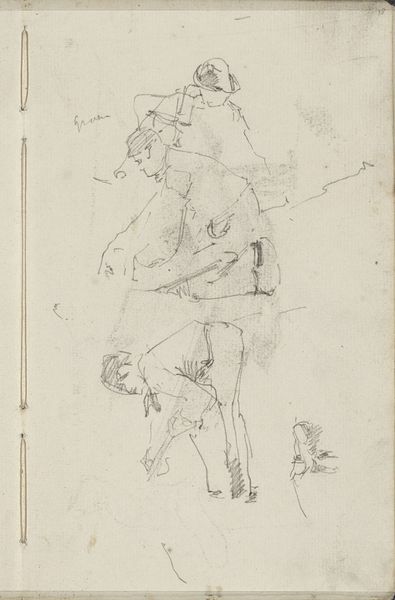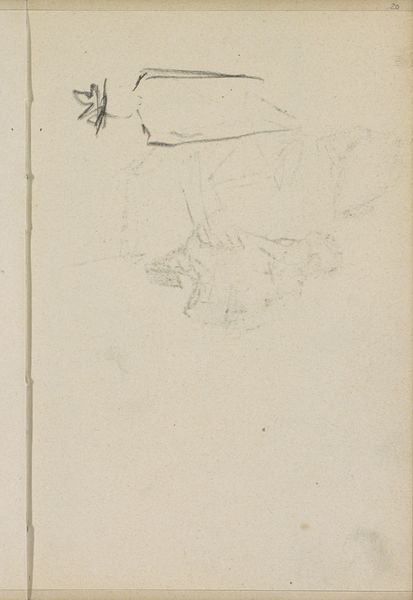
drawing, pencil
#
drawing
#
baroque
#
pencil sketch
#
figuration
#
pencil
#
history-painting
Dimensions: height 169 mm, width 212 mm
Copyright: Rijks Museum: Open Domain
Curator: Standing before us is "Standing Boy, in Profile" by Harmen ter Borch, likely created around 1648. It’s a pencil drawing held in the collection of the Rijksmuseum. Editor: Immediately, I'm struck by this image's fragility. The lines are so delicate, like a half-remembered dream. There's a sense of melancholy hanging about this young figure, a real pensiveness in the sparse strokes. Curator: Absolutely. Considering ter Borch’s wider oeuvre and the socio-political landscape of the Dutch Golden Age, one could interpret this as more than just a simple portrait. There’s a nuanced depiction of boyhood, class, and possibly even an exploration of nascent identity in a time of immense social change. Editor: Identity... that’s it! He’s so lightly sketched; it’s almost as if the artist is asking: "Who is this boy becoming?" I mean, that wheel-like form over his shoulder, what does that even mean? It makes you question what burdens or aspirations he might carry. Curator: The wheel is symbolic of Saint Catherine and is, with the sword, the attribute that defines her representation. Ter Borch’s drawings of young figures must be contextualized alongside those by artists such as Pieter Codde and Frans Hals, who began an art-historical trend of drawing "types," figures embodying different walks of life and human experiences. The image also appears to be the result of observing "ordinary life" closely. Editor: See, to me, it feels intensely personal. It’s like catching a glimpse of someone lost in their thoughts, just for a moment. I can imagine myself, at that age, staring into nothing in particular... Maybe that says more about me than the artwork itself! But then again, is that not part of the power of this pencil sketch? Curator: Precisely. This type of historical material—drawing from the Baroque era in the Northern Netherlands—pushes us to consider how artistic intention meets the cultural narratives of the period. It challenges contemporary assumptions about how we portray identity, particularly regarding young people within historical social structures. Editor: So, it's not just a pretty picture; it's a gateway to understanding past and present. That initial sense of wistful introspection leads us to unpack some deeper questions around coming of age within history and societal expectation... Wow. Curator: Indeed. Editor: This glimpse into a fleeting moment from so long ago has me rethinking the stories we tell about growing up—the roles we perform and those we refuse.
Comments
No comments
Be the first to comment and join the conversation on the ultimate creative platform.
